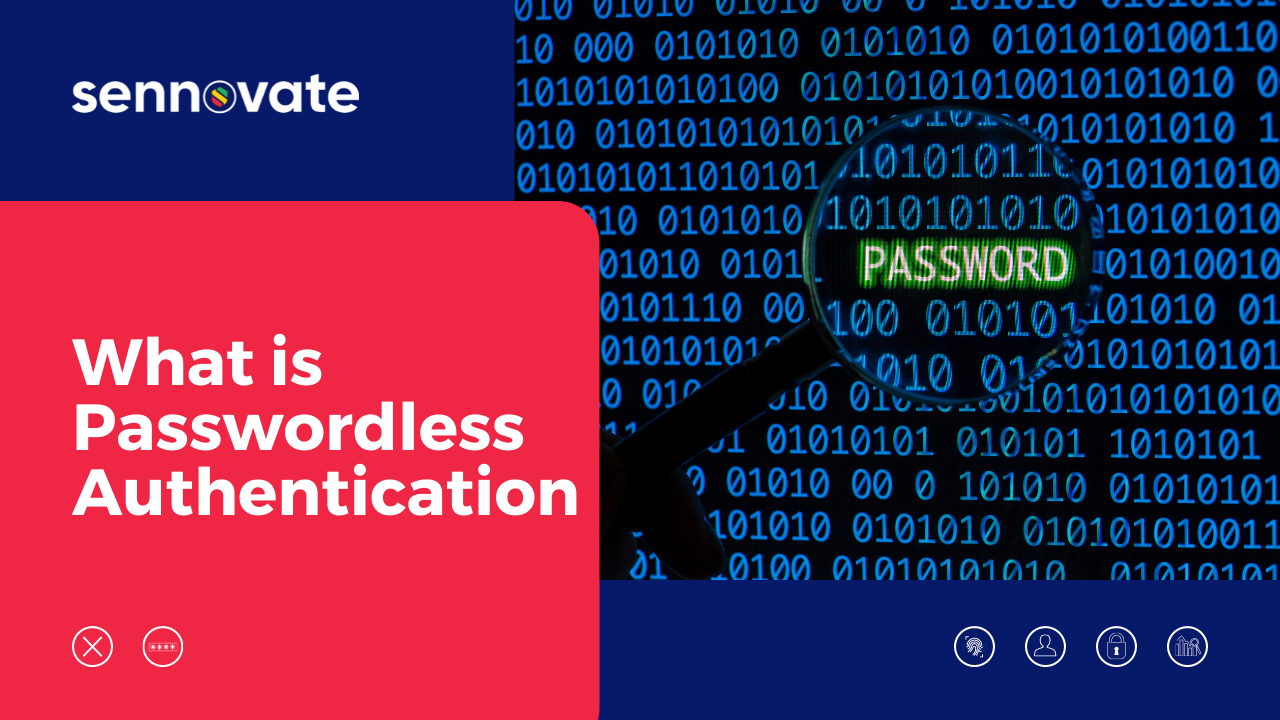
What is Passwordless Authentication?
Remembering a ton of passwords for different applications is a hassle. At the same time, using the same password for all your applications is also not preferable, as a single password disclosure can place all your data, across all your applications, at risk! Needless to say, there are many ways to manage passwords, but hackers still find ways to crack them.
A daunting statistic shows that each year, Americans lose $150 billion due to identity thefts that arise due to weak passwords. Under such circumstances, it is absolutely necessary to look out for alternatives to implement security and identity across various platforms.
What is Passwordless Authentication?
Passwordless Authentication is a method of verifying our personal identity or gaining access to resources without the use of passwords and usernames. Passwordless Authentication depends on tangible identities that you possess such as, your identity cards, biometric characteristics such as fingerprints, and may also be based on PINs, OTPs, or one-time login links called ”Magic links”, which are delivered to your emails or mobile devices.
Let us find out how authentication is achieved using each of these factors in detail.
Authentication with One-time login links (Magic links)
One-time-login links or Magic links are URLs that are generated each time the user tries to log in. These URLs are sent to the user through their registered e-mail address or via SMS, to their registered mobile number. By clicking the URL, the user gains access to the application. This type of authentication method is preferred when frequent logins into systems are not required. Using Magic links, organizations no longer need to store customers’ valuable data such as passwords and the expenses made on securing these passwords can also be saved.
Authentication with OTP (One Time Passwords) and PIN
This method uses the same principle as that of magic links. However, in this authentication process, whenever a user tries to login into the system, the authentication system sends an OTP or a PIN to a dedicated mobile number or an Email Id. The user is required to provide the password to the system and then the user can log in to the system. This method also finds its practical application where frequent logins are not required.


Authentication with Biometric characteristics
This is one of the most commonly used passwordless authentication methods. Using this authentication method, users can verify their identity using biometric features such as fingerprint, facial scan, voice, and sometimes even their iris.
The notion behind this method is, every human being has different biometrics and these biometric features cannot be stolen. Unlike passwords, biometrics features are consistent. Once biometric features are registered, users can quickly log in to the systems without giving strain to their memory.
Most of the devices including laptops, iPads, and smartphones are now preloaded with such sensors that can provide features like ‘face-unlock’ which uses their face as their ID, or ‘fingerprint unlock’.
Authentication using hard tangible devices such as USB keys, badges, and wearables
These components are also known as hardware tokens. This authentication method uses hardware tokens such as USB keys, Bluetooth-enabled devices such as wearables, or smartcards to ensure your identity. These FIDO methods use cryptographic methods internally, and the associated devices are considered keys. Each time a user tries to log in to the system, he/she is required to authenticate by plugging-in the USB, scanning the badge or
smartcards. This method is comparatively safe and is often used as a
part of MFA (Multi-Factor Authentication).
How Passwordless Authentication takes the edge?
- These authentication methods are faster as you no longer need to type your credentials every time you try to log in.
- You don’t need to reset passwords as these methods have lower risks of being stolen.
- As passwords are vulnerable to cyber attacks, these methods have incredibly reduced data breaches, cyber threats, and activities like spoofing and phishing. As a result, systems are comparatively safer.
- These authentication methods have greatly reduced expenses made by organizations and companies to secure the credentials of their customers.
Is the future passwordless?
Passwordless Authentication methods have provided remarkable convenience to users and customers as they no longer need to remember several different passwords. However, passwordless authentication methods are not replacing passwords completely as many devices still don’t support these features and the migration requires considerable investments. Despite all odds, passwordless authentication methods are comparatively more secure and seamless.
Implementing Passwordless Authentication process with Sennovate.
Sennovate helps organizations to implement seamless passwordless authentication. We have experts and partners who ensure easy deployment and up and running solutions in no time.
